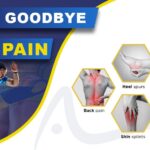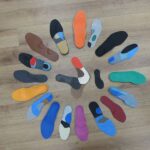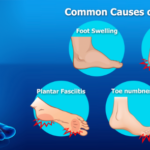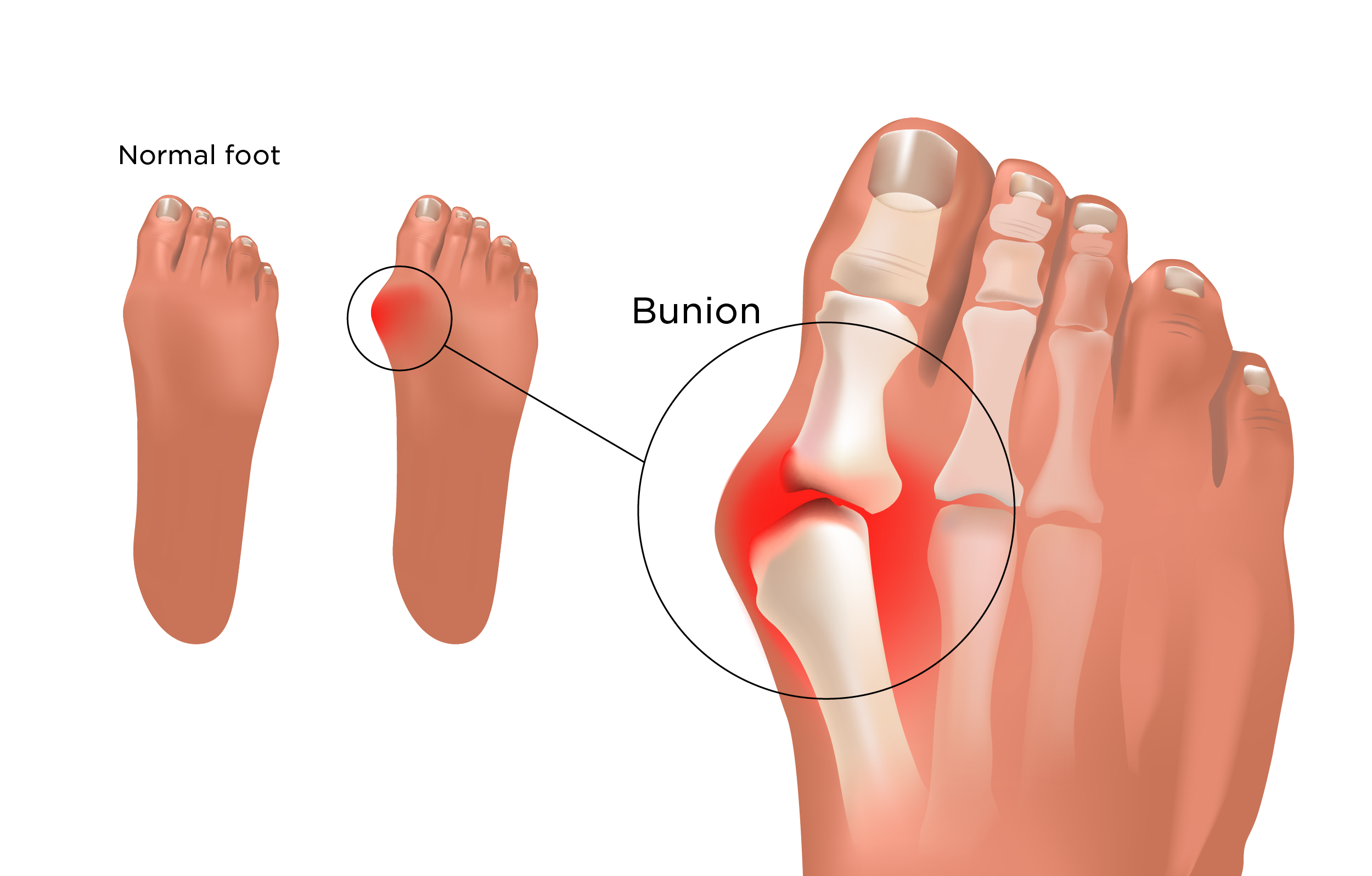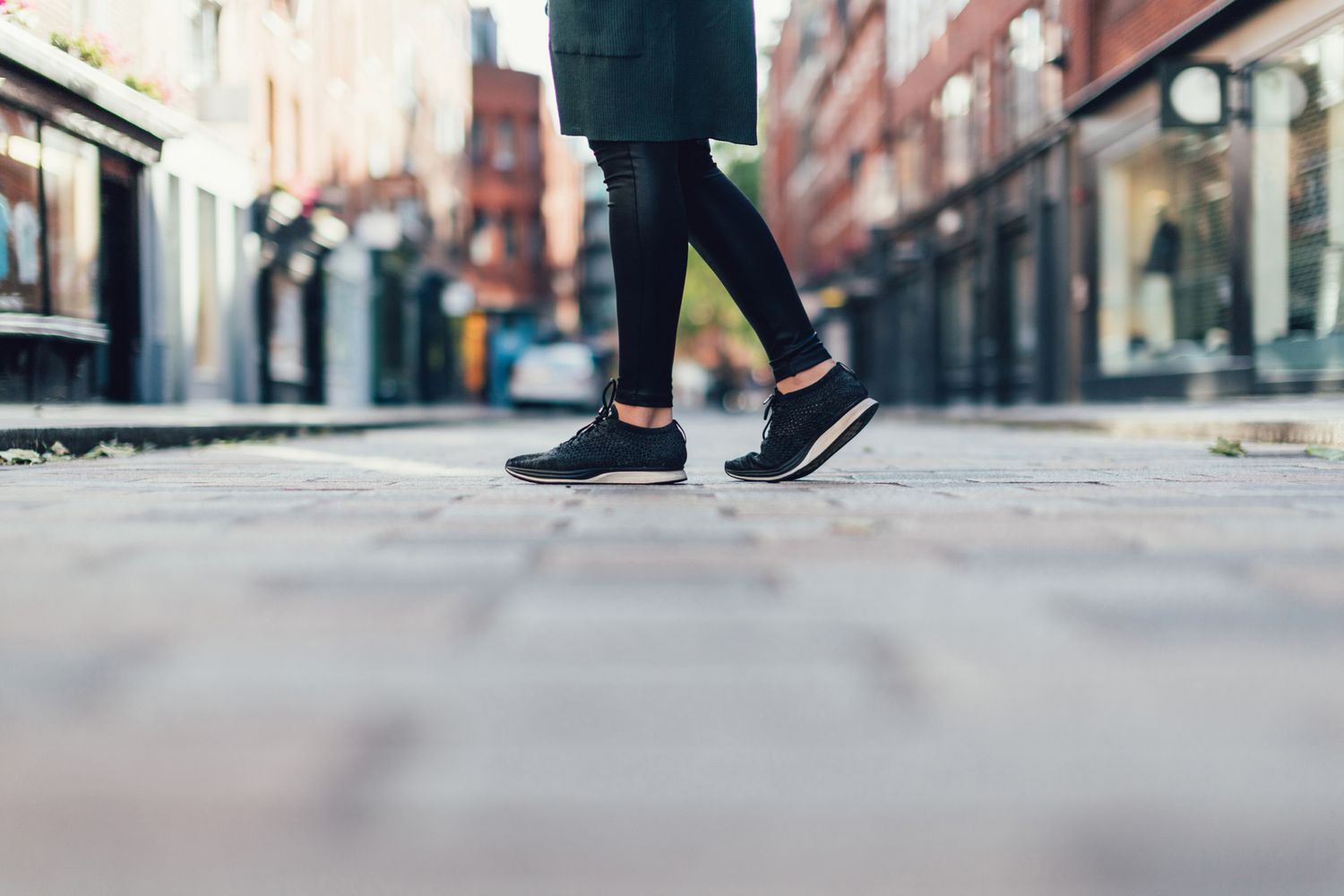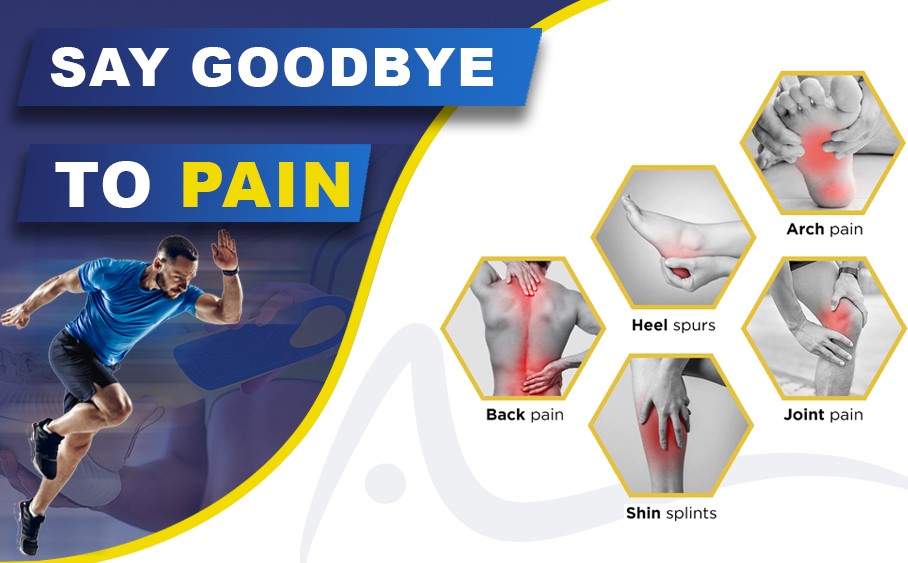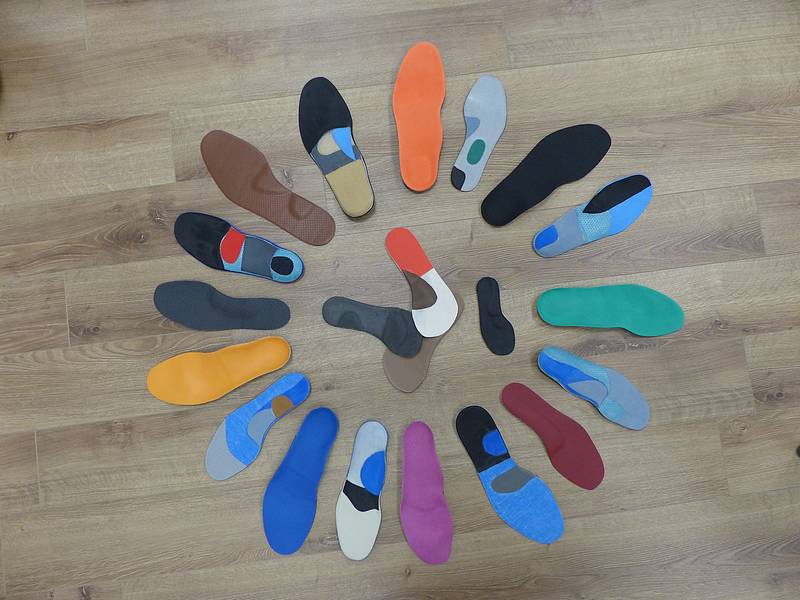Introduction
Bunions, medically termed as Hallux Valgus, are bony bumps that form on the joint at the base of the big toe. They develop gradually, causing the big toe to lean toward the second toe, resulting in discomfort, inflammation, and often difficulty in finding suitable footwear. These conditions can significantly impact an individual’s foot comfort and overall mobility.
What Are Bunions?
Bunions, medically known as Hallux Valgus, are deformities that manifest as bony protrusions forming on the joint at the base of the big toe. This condition typically progresses gradually, resulting in the displacement of the big toe towards the smaller toes. As the big toe shifts, it causes a visible bump on the inner side of the foot, altering its natural alignment.
The development of bunions is often accompanied by discomfort, which can range from mild to severe. Individuals might experience swelling, redness, and tenderness around the affected area. The pressure exerted on the joint due to the displacement can lead to persistent pain, especially while walking or wearing shoes. This discomfort can significantly impact daily activities and the choice of footwear.
Moreover, bunions can contribute to the formation of calluses or corns on the affected toe due to friction and pressure from ill-fitting shoes. These skin conditions may further exacerbate the discomfort and pain associated with bunions.
The presence of bunions can affect an individual’s gait and posture, potentially leading to secondary issues such as pain in other parts of the foot, knee, or even the lower back. Seeking proper care and suitable interventions is essential to manage bunion-related symptoms and maintain foot health and comfort.
Challenges of Bunions
- Foot Discomfort: Bunions often cause pain, tenderness, and inflammation around the affected area. This discomfort can make it challenging to walk, stand, or wear certain types of shoes comfortably.
- Difficulty Finding Footwear: The misalignment of the big toe due to bunions can lead to difficulties finding properly fitting shoes. Narrow or tight footwear can exacerbate the discomfort.
- Impact on Mobility: Severe bunions can hinder mobility and affect the natural gait, leading to alterations in walking patterns and potential discomfort while engaging in physical activities.
- Skin Issues: The pressure exerted by bunions can result in the development of calluses, corns, or even blisters on the affected toe, adding to the discomfort and potential pain.
- Secondary Complications: Bunions can influence foot mechanics, potentially causing issues like hammertoes, where the smaller toes become bent or curled due to pressure and imbalance in the foot structure.
- Impact on Daily Activities: From simple tasks like walking to more involved activities such as exercising or participating in sports, bunions can restrict movement and affect one’s ability to engage comfortably in daily routines.
Addressing these challenges often involves various treatment approaches, including proper footwear, orthotic devices like insoles, physical therapy, or in severe cases, surgical intervention. Regular monitoring and care can help mitigate these challenges and improve overall foot comfort and mobility for individuals dealing with bunions.
Importance of Footwear
- Support and Comfort: Properly fitting shoes provide adequate support to the feet, reducing pressure on the bunion and surrounding areas. They minimize discomfort and help in maintaining a more natural foot alignment.
- Preventing Aggravation: Ill-fitting or narrow shoes can exacerbate bunion pain by exerting pressure on the affected area. Choosing shoes with wider toe boxes and ample cushioning can prevent further aggravation of bunions.
- Enhancing Mobility: Comfortable footwear promotes better mobility. Shoes that accommodate the foot’s shape and provide proper arch support can aid in walking comfortably, improving overall mobility despite the presence of bunions.
- Reducing Complications: Well-designed shoes lessen the risk of developing additional foot issues such as corns, calluses, or blisters. They help distribute weight evenly, reducing the strain on the bunion and minimizing related complications.
- Supporting Treatment: Appropriate footwear complements other bunion management strategies, like using orthotic insoles or undergoing physical therapy. It assists in maintaining the benefits derived from these treatments.
Choosing shoes with a wider toe box, soft and flexible materials, sufficient arch support, and cushioning can significantly alleviate discomfort associated with bunions. Prioritizing comfort and proper fit when selecting footwear is vital for managing bunion-related challenges and ensuring better foot health and comfort.
Insoles for Bunions
- Support and Alignment: Insoles designed specifically for bunions offer targeted support and help in realigning the foot. They assist in distributing pressure more evenly across the foot, reducing strain on the bunion.
- Cushioning and Comfort: These specialized inserts provide cushioning to the affected area, easing pain and reducing friction between the bunion and the shoe. The added padding enhances comfort while walking or standing.
- Stabilization and Correction: Insoles with arch support or custom orthotics aid in stabilizing the foot, correcting imbalances, and improving overall foot mechanics. This can prevent further progression of the bunion and related complications.
- Customization and Adaptability: Custom-made insoles cater to the specific contours of an individual’s feet, offering personalized support and comfort. They adapt to the foot’s shape, providing enhanced relief for bunion-related discomfort.
- Compatibility with Footwear: Insoles designed for bunions are typically versatile and can be used with various types of footwear. They fit seamlessly into shoes, ensuring consistent support and comfort throughout the day.
Incorporating insoles into footwear can significantly enhance comfort, reduce pain, and improve mobility for individuals dealing with bunions. They play a pivotal role in providing targeted support and cushioning, contributing to better overall foot health and comfort.
Factors to Consider
- Arch Support: Look for insoles with adequate arch support to distribute pressure evenly across the foot, reducing strain on the bunion. This helps in maintaining proper alignment and alleviating discomfort.
- Cushioning Material: Opt for insoles made from cushioning materials like gel, foam, or memory foam. These materials provide comfort and reduce the impact on the bunion area while walking or standing.
- Size and Fit: Ensure the insoles fit well within your shoes without crowding the toes. They should offer support and cushioning to the bunion without causing additional pressure points or discomfort.
- Material Durability: Choose insoles made from durable materials that can withstand daily wear and tear. Long-lasting insoles offer consistent support and comfort over an extended period.
- Compatibility with Shoes: Consider the type of shoes you frequently wear. Ensure the insoles are compatible with different shoe styles, including sneakers, dress shoes, or boots, to provide continuous support regardless of footwear choice.
- Customization Options: Customizable or trim-to-fit insoles allow for personalization to better suit the contours of your feet. Customized support can enhance comfort and effectiveness in managing bunions.
- Medical Advice: Seek advice from a podiatrist or foot specialist. They can recommend specific insoles tailored to your foot structure and the severity of your bunion, ensuring optimal support and relief.
Taking these factors into consideration when selecting insoles for bunions can significantly contribute to effectively managing discomfort, promoting better foot health, and improving overall comfort while dealing with bunions.
Best Insoles for Bunions
- Targeted Arch Support: Atlas Arch Support insoles offer excellent arch support, aiding in distributing pressure evenly across the foot. This targeted support helps in reducing strain on the bunion and promotes better alignment.
- Cushioning for Comfort: These insoles incorporate cushioning materials that offer comfort and alleviate pain associated with bunions. The cushioning helps in reducing friction and impact on the affected area while walking or standing.
- Customizable Fit: Some Atlas Arch Support insoles come with customization options, allowing users to trim or modify the insoles to better fit their shoes and foot shape. This customization ensures a more personalized and comfortable fit.
- Versatile Usage: These insoles are designed to fit various shoe styles, from athletic shoes to casual footwear. Their versatility makes them suitable for everyday use, providing consistent support and comfort.
- Stability and Alignment: The arch support offered by Atlas insoles aids in stabilizing the foot, promoting better alignment. This can contribute to reducing the progression of bunions and associated discomfort.
The Atlas Arch Support insoles are recognized for their ability to provide targeted support, cushioning, and alignment for individuals dealing with bunions. However, as preferences and foot needs vary, it’s advisable to consider personal comfort and consult with a healthcare professional for tailored advice on the most suitable insoles for managing bunions effectively.
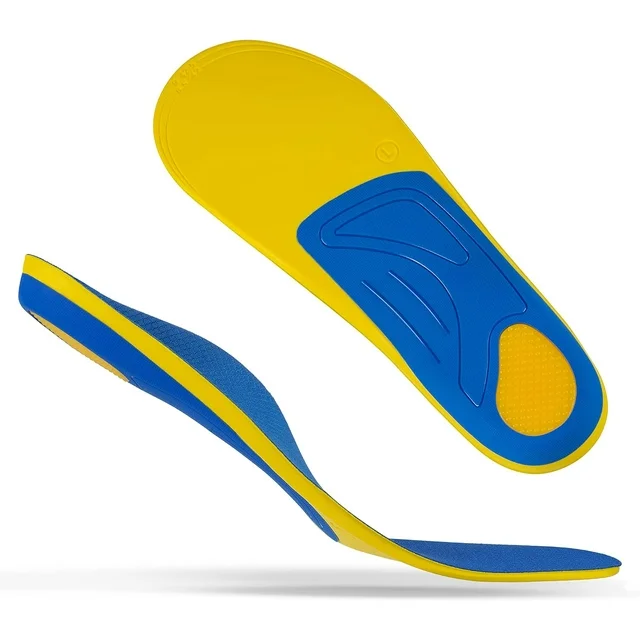
How to Use Insoles
- Select the Right Size: Ensure the insoles match the size of your shoes. Trim-to-fit insoles may require adjustments to fit perfectly within your footwear.
- Clean and Dry Shoes: Before inserting the insoles, make sure your shoes are clean and dry to maintain hygiene and prevent moisture buildup.
- Insert the Insoles: Place the insoles inside your shoes, positioning them correctly to align with the arch and heel of your foot. Ensure they lie flat and cover the entire footbed.
- Test for Comfort: Wear the shoes with the newly inserted insoles and assess the comfort level. Ensure there are no pressure points or discomfort caused by the insoles.
- Allow Time for Adaptation: Initially, you may need time to adjust to the new support and cushioning provided by the insoles. Start by wearing them for short periods and gradually increase the duration as your feet adapt.
- Regular Maintenance: Check the condition of the insoles periodically. Clean them if necessary and replace them when signs of wear and tear, loss of cushioning, or reduced support are noticeable.
- Use in Various Footwear: If suitable, transfer the insoles between different pairs of shoes to ensure consistent support and comfort throughout various activities.
- Seek Professional Advice: If experiencing persistent discomfort or if the insoles aren’t providing sufficient relief, consult a podiatrist or healthcare professional for guidance and potential adjustments.
By following these steps and paying attention to comfort and fit, you can maximize the benefits of insoles for bunions. Consistent use and proper maintenance of the insoles contribute to better foot support, reduced discomfort, and improved overall comfort while dealing with bunions.
Lifestyle Changes
- Footwear Choices: Opt for shoes with wider toe boxes and ample room for the toes. Avoid high heels or narrow shoes that exert pressure on the bunion. Supportive, well-fitted footwear is crucial in reducing discomfort.
- Orthotic Support: Incorporate orthotic inserts or insoles specifically designed for bunions into your footwear. These provide targeted support and cushioning, easing strain on the bunion and improving foot alignment.
- Weight Management: Maintain a healthy weight to reduce excess pressure on the feet. Excess weight can exacerbate bunion-related discomfort, so a balanced diet and regular exercise are beneficial.
- Foot Care Routine: Practice good foot hygiene and care. Regularly wash and dry your feet, moisturize the skin, and pay attention to any changes or signs of irritation around the bunion area.
- Physical Activity Modification: Modify high-impact activities that cause discomfort. Engage in low-impact exercises like swimming or cycling to maintain fitness without aggravating bunions.
- Regular Movement Breaks: Take breaks during prolonged periods of standing or sitting to relieve pressure on the feet. Gentle foot stretches and movements can prevent stiffness and discomfort.
- Proper Shoe Sizing: Ensure your shoes fit correctly and comfortably. Consider getting your feet measured regularly as foot size can change over time.
- Consultation with Specialists: Seek advice from a podiatrist or orthopedic specialist to explore treatment options, receive personalized guidance, and discuss potential interventions or exercises tailored to alleviate bunion-related discomfort.
Incorporating these lifestyle changes can aid in managing bunions, reducing discomfort, and improving overall foot health. Consistency in implementing these adjustments alongside proper footwear and care can make a notable difference in managing bunion-related discomfort and maintaining foot comfort.
Additional Support
- Bunion Splints: These devices aim to realign the big toe and the joint, reducing discomfort by providing external support and encouraging proper toe positioning.
- Toe Spacers or Separators: These devices fit between the toes, helping in maintaining proper toe alignment and reducing friction between toes, relieving discomfort caused by bunions.
- Bunion Pads or Cushions: These soft pads or cushions can be placed over the bunion to reduce pressure and provide cushioning, offering relief and protection from friction while wearing shoes.
- Physical Therapy: Engaging in specific exercises and stretches recommended by a physical therapist can strengthen foot muscles, improve flexibility, and alleviate bunion-related discomfort.
- Footwear Modifications: Consider custom-made or specially designed shoes that accommodate bunions. Some footwear brands offer styles with wider toe boxes or stretchable materials to reduce pressure on the bunion area.
- Anti-inflammatory Treatment: Over-the-counter or prescribed medications like NSAIDs (nonsteroidal anti-inflammatory drugs) can help manage pain and reduce inflammation associated with bunions.
- Ice Therapy: Applying ice packs to the bunion area for short periods can reduce swelling and provide temporary relief from discomfort.
- Orthopedic Consultation: Consult with an orthopedic specialist or podiatrist for a comprehensive assessment. They can offer personalized recommendations, including orthotic devices, therapies, or, in severe cases, surgical options to address bunions.
Exploring these additional support options alongside insoles and lifestyle adjustments can enhance comfort and alleviate discomfort caused by bunions. It’s crucial to find the right combination of support methods tailored to individual needs to effectively manage bunion-related discomfort and maintain foot health.
Expert Insights
- Assessment and Diagnosis: Experts can accurately diagnose bunions, assessing their severity and impact on foot health through physical examination and sometimes imaging tests like X-rays. This evaluation guides personalized treatment recommendations.
- Foot Mechanics Understanding: Podiatrists offer insights into foot biomechanics, explaining how bunions develop and the impact on foot structure and movement. Understanding these mechanics helps individuals make informed decisions about managing bunions.
- Treatment Options: Experts provide a range of treatment options, from conservative measures like orthotic devices, footwear modifications, and exercises to surgical interventions for severe cases. They guide patients in choosing the most suitable approach based on individual needs.
- Preventive Strategies: Podiatrists offer guidance on preventive measures to slow down bunion progression or reduce discomfort. This may include footwear advice, lifestyle adjustments, and exercises to strengthen foot muscles.
- Orthotic Recommendations: Experts recommend specific types of insoles or orthotic devices tailored to an individual’s foot structure and the severity of their bunions. They provide insights into the most effective orthotic options for managing discomfort.
- Post-Surgical Care: In cases where surgery is necessary, podiatrists guide patients through post-operative care, rehabilitation, and steps to optimize recovery, ensuring successful outcomes.
- Long-Term Foot Health: Podiatrists emphasize the importance of long-term foot health, offering guidance on foot care routines, footwear choices, and regular check-ups to monitor bunion progression and overall foot health.
Seeking expert insights from podiatrists or foot specialists is crucial for comprehensive bunion management. Their knowledge and guidance help individuals understand their condition better, explore suitable treatment options, and make informed decisions to effectively manage bunions and maintain optimal foot health.
Conclusion
Insoles designed specifically for bunions offer a promising solution to alleviate discomfort and pain associated with this condition. Pairing them with lifestyle adjustments can significantly improve one’s quality of life.
FAQs
- Are insoles the only solution for bunions? Insoles are beneficial, but lifestyle changes and expert advice complement their effectiveness.
- How do I know which insole is right for my bunion? Consider factors like material, support, and severity of your bunion. Consulting a podiatrist can also provide personalized guidance.
- Can insoles completely eliminate bunion pain? While they provide relief, complete elimination may require a combination of remedies and adjustments.
- Are gel-based insoles better than cushioned ones for bunions? The preference varies among individuals. Some find gel-based more comfortable, while others prefer cushioned for support.
- How long should I wear insoles daily for optimal results? Gradually increase usage time, starting with a few hours daily and adjusting as per comfort. Consultation with a professional can provide tailored advice.


